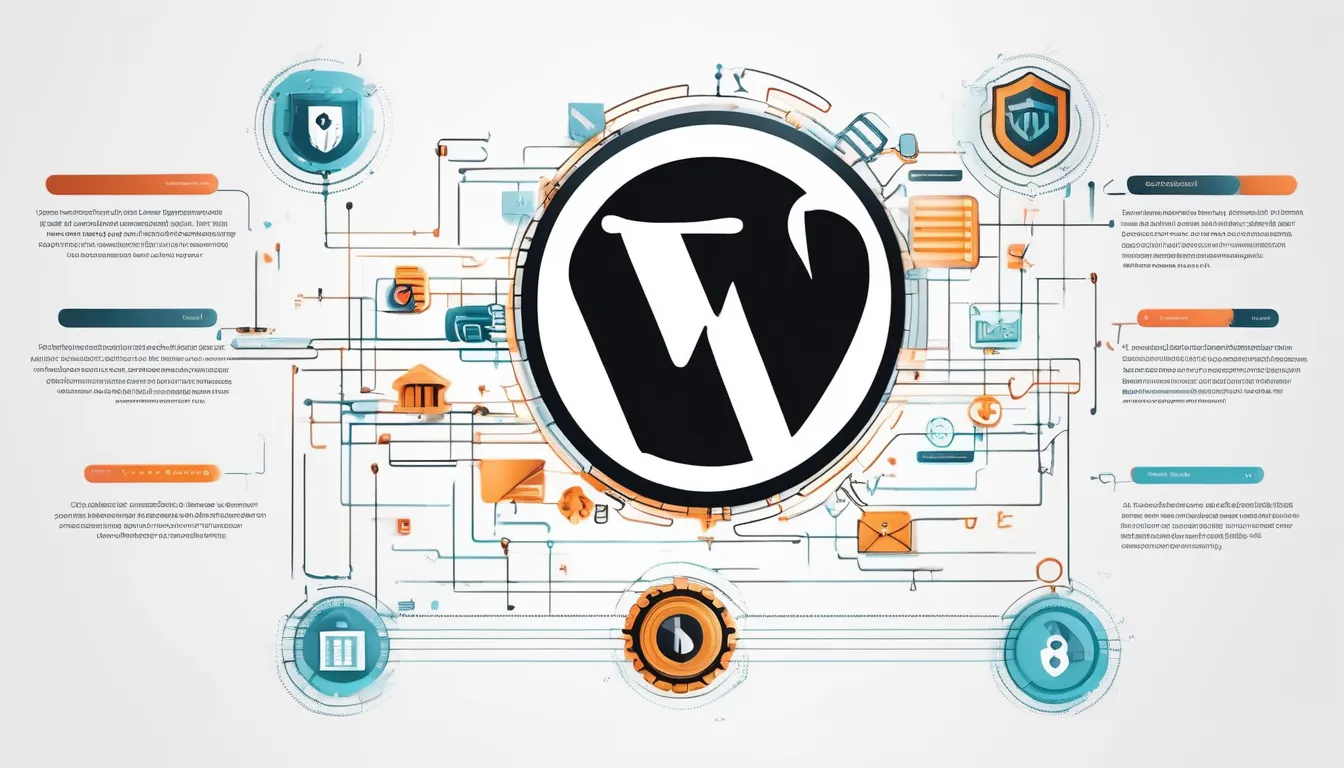As the owner of a WordPress site, you're likely aware of the potential security risks that come with having an online presence. But are you taking the necessary steps to protect your site from cyber threats? Implementing a solid security strategy is crucial to prevent attacks, data breaches, and other malicious activities that can harm your business and reputation. By understanding the most effective security solutions, you can significantly reduce the risk of your site being compromised. But where do you start, and what specific measures should you take to safeguard your WordPress Security Solution site – let's explore this further.
Implementing Strong Password Policies
A strong password is the first line of defense against hackers and malicious users trying to gain unauthorized access to your WordPress site. You should create a password that's unique to each account and contains a mix of uppercase and lowercase letters, numbers, and special characters.
Avoid using easily guessable information, such as your name, birthdate, or common words.
When creating a password for your WordPress site, you should consider using a passphrase, which is a series of words that are easy for you to remember but hard for others to guess.
You can use a password manager to generate and store unique, complex passwords for all your accounts. This way, you only need to remember one master password.
To further enhance password security, you should limit login attempts and set up two-factor authentication (2FA).
2FA requires both a password and a verification code sent to your phone or email, adding an extra layer of protection against unauthorized access.
You can use plugins like Google Authenticator or Authy to set up 2FA on your WordPress site.
Securing WordPress File System
You regularly update your WordPress core, themes, and plugins to prevent vulnerabilities, but securing your WordPress file system is equally crucial.
This involves setting the right file permissions and ensuring that your files aren't writable by everyone.
Setting the correct file permissions can prevent malicious scripts from being executed on your site.
Here are some key steps to take:
- Change the ownership of your files to the user running the web server, not the FTP user. This prevents other users from modifying your files.
- Set the permissions of your files to 644, which means the owner has read and write permissions, while the group and others only have read permissions.
- Set the permissions of your directories to 755, which means the owner has read, write, and execute permissions, while the group and others have read and execute permissions.
Protecting Against Malware Attacks
Malware attacks can cripple your WordPress site in a matter of seconds. To protect against these attacks, it's essential to install a reputable malware scanner that can detect and remove malware from your site. You can choose from several options, including Wordfence, MalCare, and Sucuri.
These plugins scan your site regularly for malware and alert you if they detect any suspicious activity.
Regularly updating your WordPress core, themes, and plugins is also crucial in preventing malware attacks.
Outdated software can leave your site vulnerable to security exploits, making it an easy target for hackers. Additionally, use strong passwords and limit login attempts to prevent brute-force attacks.
You should also monitor your site's activity regularly, looking for any unusual patterns or behaviors that could indicate a malware attack.
Keep a record of your site's files and database, so you can quickly restore your site in case of an attack.
By taking these precautions, you can significantly reduce the risk of a malware attack on your WordPress site.
Stay vigilant and keep your site secure.
Configuring Firewalls and Access
The security of your WordPress site relies heavily on its ability to control incoming and outgoing traffic. A firewall acts as a barrier between your site and potential threats, blocking malicious traffic and allowing legitimate traffic to pass through.
To configure your firewall effectively, you'll need to set up rules that define what traffic is allowed and what's blocked.
You can configure your firewall by:
- Using a web application firewall (WAF) to block traffic based on specific rules and patterns
- Enabling IP blocking to restrict access to your site from specific IP addresses
- Setting up a rate limiting system to prevent brute-force attacks by limiting the number of login attempts from a single IP address
You'll also need to configure access controls to ensure that only authorized users have access to your site. This includes setting up user roles and permissions.
Limiting login attempts, and using secure protocols such as HTTPS and SFTP are also part of configuring access controls. By configuring your firewall and access controls effectively, you can significantly improve the security of your WordPress site.
Monitoring Site Activity Regularly
Monitoring your WordPress site's activity regularly is crucial to identifying potential security threats before they escalate. You should track login attempts, file changes, and database modifications to detect suspicious activity. By doing so, you can quickly respond to potential breaches and minimize damage.
Regular monitoring also helps you stay on top of performance issues and optimize your site for better user experience. Here are some key aspects to focus on when monitoring your WordPress site:
|
Aspect |
Tools |
Frequency |
|---|---|---|
|
Login attempts |
Wordfence, Jetpack |
Daily |
|
File changes |
Wordfence, Sucuri |
Weekly |
|
Database modifications |
WP DB Manager, UpdraftPlus |
Weekly |
|
Performance issues |
GTmetrix, Pingdom |
Monthly |
|
Uptime and downtime |
Uptime Robot, Pingdom |
Daily |
Conclusion
You've taken the first step to safeguarding your WordPress site by implementing proven security solutions. With strong password policies, a secure file system, protection against malware attacks, firewalls, and regular monitoring, you're well-equipped to prevent common security threats. Stay vigilant and keep your site updated to ensure your security measures remain effective. By doing so, you'll significantly reduce the risk of your site being compromised and protect your online presence.



